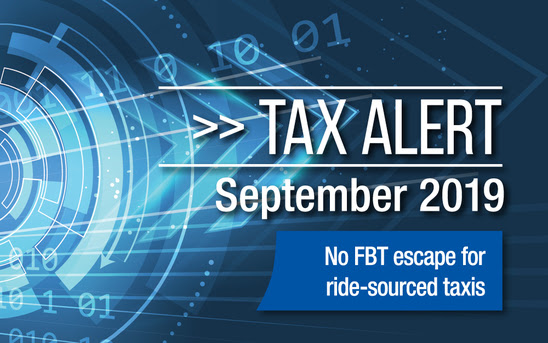
It’s September and spring is in the air. It’s time to shake off the winter cobwebs, get out into the garden or the great outdoors. It’s also a good time to plan your summer break.
August was a challenging month for investors. Global markets reacted negatively to an escalation in the US-China trade war and the looming no-deal Brexit. US economic growth slowed to an annual rate of 2 per cent in the June quarter, down from 3.1 per cent the previous quarter. China’s economy is also slowing – industrial production, retail sales and fixed asset investment all recorded lower growth in the year to July.
In Australia, most companies reported positive earnings for the 2019 financial year, but only a little over half managed to lift profits. One challenge is retail spending, up 0.2 per cent in the year to June, the weakest in 28 years. The NAB business confidence index rose in July, but the business conditions index fell to 2.4 points (the long-term average is 5.8 points).
If you are concerned about the economy and the growth of your business, feel free to contact us for a no-obligation discussion on how our Business Advisory services can assist you.
Yours sincerely,
Nick Tsoulakis
Managing Director
BA (Acc), CA, NTAAF, NTAA+, Tax Agent No.25533281

Positives and negatives of gearing
Negatively gearing an investment property is viewed by many Australians as a tax-effective way to get ahead.
According to Treasury, more than 1.9 million people earned rental income in 2012-13 and of those about 1.3 million reported a net rental loss.
So it was no surprise that many people were worried about how they would be affected if Labor had won the May 2019 federal election and negative gearing was phased out as they had proposed. With the Coalition victory, it appears negative gearing is here to stay.
While that may have brought a sigh of relief for many, negative gearing is not always the best investment strategy. Your individual circumstances will determine whether negative gearing is advisable. For many, it may pay to positively gear.
So, what is gearing?
Basically, it’s when you borrow money to make an investment. That goes for any investment, but property is where the strategy is most commonly used.
If the rental returns from an investment property are less than the amount you pay in interest and outgoings you can offset this loss against your other assessable income. This is what’s called negative gearing.
In contrast, positive gearing is when the income from your investment is greater than the outgoings and you make a profit. When this occurs, you may be liable for tax on the net income you receive but you could still end up ahead.
While negative gearing may prove tax effective, it’s dependent on the after-tax capital gain ultimately outstripping your accumulated losses.
The importance of capital gains
If your investment falls in value or doesn’t appreciate, then you will be out of pocket. Not only will you have lost money on the way through, but you won’t have made up that loss through a capital gain when you sell.
That’s the key reason why you should never buy an investment property solely for tax breaks.
But if the investment does indeed grow in value, then as long as you have owned it for more than 12 months you will only be taxed on 50 percent of any increase in value.
When it pays to think positive
If you are retired and have most of your money in superannuation, negative gearing may not be so attractive. This is because all monies in your super are tax-free on withdrawal. And thanks to the Seniors and Pensioners Tax Offset (SAPTO), you may also earn up to $32,279 as a single or $57,948 as a couple outside super before being subject to tax.
It makes more sense to negatively gear during your working years with the aim of being in positive territory by the time you retire so you can live off the income from your investment.
While buying the right property at a time of your life when you are working and paying reasonable amounts in tax may make negative gearing a good option, sometimes positive gearing may still be a better strategy.
Case study
ASIC’s MoneySmart website compares two people each on an income of $70,000 a year. They each buy an investment property worth $400,000, paying 6 per cent interest. Additional expenses are $5000 a year while the rental income is $500 a week.
Rod negatively gears, borrowing the full purchase price; Karen is positively geared with a loan of $100,000. In terms of annual net income, Rod who negatively geared is worse off than if he had not invested in a property at all, with net income of $52,868.
Positively geared Karen ended up $10,000 ahead, with net income for the year of $64,433.
Of course, if his property grows in value over time, Rod should ultimately recoup some or all these extra payments.
Claiming expenses
If you do negatively gear, then it’s important that you claim everything that’s allowed and keep accurate records.
For investment property, this includes advertising for tenants, body corporate fees, gardening and lawn moving, pest control and insurance along with your interest payments.
If you want to know whether negative gearing is the right strategy for you, then call us to discuss.

Tax Alert September 2019
The landscape of Australia’s personal income tax system has changed significantly following the passage of the Morrison Government’s tax legislation through the Parliament.
Here’s a roundup of some of the other recent developments in the world of tax.
Tax reform legislation passes
Many Aussies are receiving a larger tax refund following passage of The Treasury Laws Amendment Act 2019, which made law the three-stage income tax cuts announced in the 2019–20 Federal Budget.
The new legislation increases the base and maximum amounts of the Low and Middle Income Tax Offset (LMITO) for the period 2018-19 to 2021-22.
It also lifts the top threshold of the 19 percent income tax bracket from $41,000 to $45,000 from 2022-23 and reduces the 32.5 percent tax rate to 30 percent from the 2024-25 financial year.
Guidance on FBT exemption for taxis
Employers need to take note of new guidance released by the ATO clarifying that the existing FBT exemption for employee taxi travel does not extend to ride-sourcing services such as Uber. Unlike its previous view, the ATO has now stated the FBT Assessment Act limits the definition of ‘taxi’ to a vehicle licensed to operate as a taxi by the relevant state or territory. This definition of taxi travel is different to the one used for GST purposes.
Employee travel is still eligible for FBT relief if it involves a traditional taxi service used for a single trip beginning or ending at the employee’s place of work, or if the travel is due to employee sickness or injury.
Tip-offs likely to grow with new hotline
After a record 70,000 tip-offs were received by the ATO during 2018-19, the introduction of its new Black Economy Hotline and Tax Integrity Centre (TIC) is likely to see this number rise further.
From 1 July 2019, Australians can report known or suspected tax evasion, black economy and phoenix activities via an ATO website tip-off form, the ATO app, or the new Black Economy Hotline (1800 060 062).
Behaviours such as demanding or paying for work cash-in-hand to avoid tax, not reporting or under-reporting income, underpayment of wages, ID fraud, sham contracting arrangements, GST fraud and money laundering can all be reported.
No deductions for unreported employee payments
The tax man is reminding employers that unreported cash-in-hand payments made to workers after 1 July 2019 are no longer eligible for tax deductions. In addition to the loss of a tax deduction, employers not complying with their PAYG withholding obligations may be penalised.
The new rules cover payments to employees not complying with PAYG withholding obligations as well as payments to contractors who do not provide an ABN where tax is not withheld. The change affects payments made during 2019-20 and all subsequent financial years.
As an employer, if you fail to withhold or report your PAYG obligations and voluntarily disclose this before any compliance action is taken, you won’t lose your deduction. You may also be entitled to reduced penalties.
New luxury car tax thresholds
The luxury car tax (LCT) thresholds for cars imported, acquired or sold during 2019-20 have been announced by the ATO. If you buy a car with a GST inclusive value over the LCT threshold, the purchase attracts the 33 percent tax.
For the 2019-20 financial year, the new threshold for fuel-efficient vehicles is $75,526, which is the same as in 2018-19. The LCT threshold for other cars is $67,525, up from the 2018-19 limit of $66,331.
Escape Australia, not your student debt
Expats are being contacted by the tax man to remind them that heading offshore doesn’t mean leaving their student loans behind.
Under new rules, student debtors with an income-contingent loan traveling overseas need to notify the ATO of their new address and lodge an overseas travel notification. They are also required to report their worldwide income if they earn $11,470.

Managing your side hustle
Whether it’s to pursue a passion or to make a little extra money, more Australians than ever now have a side hustle.
But while freelancing, moonlighting and pursuing passion projects can be a great way to add value to your life, they can sometimes complicate how you go about managing both your time and finances.
What’s causing the shift
Wage stagnation and underemployment have contributed to the growth of the side hustle, but they are not the only factors. For many, the main motivator is that working on something that is separate to your primary job can give a sense of fulfillment that may be lacking in the 9-5.
Technological advances also play a huge role here. It’s easier and cheaper than ever to present and promote your services professionally. Anyone with a computer can create a website to sell their wares. And most people with a fairly new car can participate in the rideshare economy.
Managing your time
While side hustles can no doubt add value to your life, it’s sensible to make sure you’re managing your time accordingly to ensure you’re still getting adequate rest and leisure.
Know your boundaries and keep a diary. It may even be worthwhile looking into some time management apps to help keep things running smoothly.
It’s also important to get in the habit of recording the time taken on all related tasks, even the menial admin ones. This not only helps you to quote accurately, it also gives you an idea of what tasks generate the most income and what don’t. You can then choose to focus your energy either where the money is coming in, or on what gives you the most satisfaction. If your side hustle is not generating the desired level of income or is proving burdensome, it might be worth re-evaluating how much time you spend on it.
As your side hustle grows, it may require an increasing amount of your time, so much so, that you need to reduce your hours in your primary job. Before taking this step, you want to be certain that you will be adequately remunerated, and if not, that you can accept the lifestyle changes a reduction in income entails.
Managing your finances
How you go about managing the money you earn from and spend on your side hustle will depend on the nature of the services you’re offering.
For some, a side hustle is merely a way to bolster income and reach their financial goals sooner. For others, it’s a creative outlet. Understanding the purpose it serves will help you decide your tolerance for how much (or how little) you are making for your efforts. Creative pursuits for example might even run at a loss. And if the money you’re making off rideshare is only covering your petrol money, it may be time to reassess.
There are however a few general rules for managing the finances related to your side hustle that you should consider:
- Keep a separate bank account for your side project
- Set aside enough money for tax
- Stay on top of your invoicing – apps can help
- Talk to us about eligible deductions
- Consider making additional super contributions
- Separate business and domestic expenses if you run the business from home
It’s all about structure
As your operation grows, it’s worth giving some thought to how you structure your affairs. Most moonlighters operate as sole-traders, but company structures and trusts may also warrant consideration. Before making any decisions about which option will best suit your needs, talk to us as there are a lot of things you need to be mindful of.
Side hustles are a great way to expand your skills, pursue your passions or provide a little extra cash to play around with. But if approached the wrong way they can leave you burnt out or broke. Play it smart and put some boundaries around your time and finances and you should be good to go.
Liability limited by a scheme approved under Professional Standards Legislation.
This advice may not be suitable to you because it contains general advice that has not been tailored to your personal circumstances. Please seek personal financial advice prior to acting on this information.



